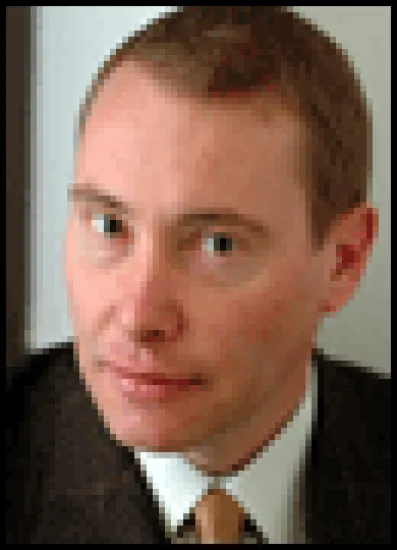| Jeffery Gundlach |
"It's an analytical problem, and I think that's why I'm particularly good at it."
Since Gundlach created the fund in 1993, it's consistently bested the Lehman Brothers Aggregate Bond Index, returning 3.36% to 2.43% in 2005, and regularly matching or beating the 800-pound gorilla of bond funds, PIMCO's mammoth $88 billion Total Return Fund. Morningstar recently named Gundlach runner-up to its fixed-income manager of the year. (The manager contends his fund had higher returns and lower volatility over one and five years than the fund that won Morningstar's top honor.)
And, as we have heard ad nauseum, it's all about bucking the conventional wisdom.
Unlike many mortgage investors, Gundlach does not use the prepayment modeling prevalent on Wall Street, which uses a statistical regression analysis to predict the future based on past returns. Though such a method may appeal to the mathematician in Gundlach, the realist in him knows better.
"Past is not prologue," he cautions. "You simply cannot look backwards and say the future will resemble the past."
Instead, Gundlach's style focuses on the changes in the world that will make the future different from the past. In 2005, that paid off big-time. Gundlach realized that new mortgage products such as option adjustable rate mortgages, hybrid ARMs and interest-only mortgages – "the types of things that you read about in the paper as being dangerous mortgages made by the devil" – brought refinancing options to a segment of the population that hadn't had many in the past. Expecting a jump in prepayments, Gundlach's fund bought "the deepest discount securities we could find," even principal-only agency collateralized mortgage obligations backed by Fannie Mae, Freddie Mac and Ginnie Mae, to capitalize on the earlier payments. Those securities returned 12% last year.
Of course, it helps that that sort of thinking fits into Gundlach's overall philosophy. "Prepayments will always be higher than people think because there's always innovation," he says. Coupled with a middle class constantly being squeezed by globalization that makes mortgages a very attractive way for Americans to help "send Junior to college or help manage finances."
"There are enough inefficiencies in the $4 trillion mortgage market," he says, to find opportunities. Gundlach's fund doesn't buy new issue mortgages because there's a greater risk that they'll refinance, he says. The focus stays on those that are a few years old and 50 to 100 basis points below the current rate to ensure some longevity. He takes the same approach with CMOs, which made up more than one-third of the fund at the end of the third quarter of 2005, buying the later cash flow tranches.
"It's a lot like buying a Treasury that's 100 bps over Treasurys," he says, as they "are very stable, have higher yields, have no credit risk, and will behave in volatility very similarly to a seven-to-10 year Treasury." Such an approach is fairly straightforward, he says, as the fund keeps out of options strategies, swaps and derivatives transactions.
"It's a little bit elegant and creative, but it's not wildly complex," he says. He balances the portfolio with ARMs – not of the hybrid or option variety, he pointedly cautions – to give short-term, stable exposure to current rates.
Moving into 2006, Gundlach has his eye firmly fixed on the Federal Reserve, which has indicated that its year-and-a-half-long series of regular interest rate increases is coming to an end. The uncertainty will force bond managers off autopilot, he says, requiring more active management than any year this decade. "You just don't know what they are going to do, and to succeed, we'll have to be more reactive." But that doesn't mean he thinks the beginning of the Bernanke era is the end of this interest rate cycle.
"People who say we're at the end of the cycle because of the [flat] yield curve are just not students of history," he argues. "It's only part of the process of the interest rate cycle ending." As for this year, Gundlach believes bonds are in good shape, especially compared to other denizens of the bond market, such as corporate and junk bonds, which he says have had their run.
By contrast, "mortgages are at fairly average incremental spreads and they are probably the cheapest bonds in the market."
If he's right, maybe Morningstar will drop the "runner up" next time around.






